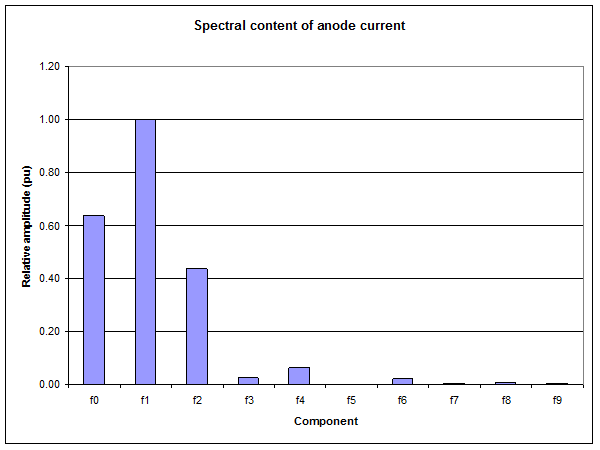
| OwenDuffy.net |
|
There is at times discussion about the presence of second harmonic component to the anode current of a Class B or AB RF amplifier, as if it is an undesirable element.
The graph above shows the spectral content of the anode current of the AL-811H modelled at Ameritron AL811H tube selection using RF Power Amplifier Tube Performance Computer which performs a fourier analysis of the anode current ‘pulses’. In the graph, f0 is the DC component of anode current, f1 the fundamental, f2 the second harmonic etc. Note that the second harmonic is around 44% of the fundamental current. In this case, it is triodes operated in AB2, so the cathode current also includes grid current ‘pulses’ which further increase the relative amplitude of second harmonic in the cathode current.
The second harmonic component is an essential part of Class B or AB operation. If anything is done in the grid-cathode circuit to reduce the second harmonic component, the tube is moved towards Class A operation (ie increased conduction angle, reduced efficiency, higher dissipation). For this reason, it is vital that in grounded grid configuration, the cathode circuit presents a relatively low impedance to the second harmonic current, to do otherwise would introduce higher cathode degeneration (negative feedback), reducing gain at the second harmonic, and driving the valve towards Class A operation.
Obviously, second harmonic in the amplifier output is undesirable, and must be reduced sufficiently in the output circuit.
© Copyright: Owen Duffy 1995, 2021. All rights reserved. Disclaimer.